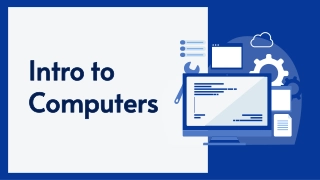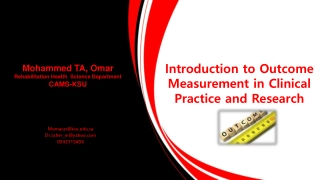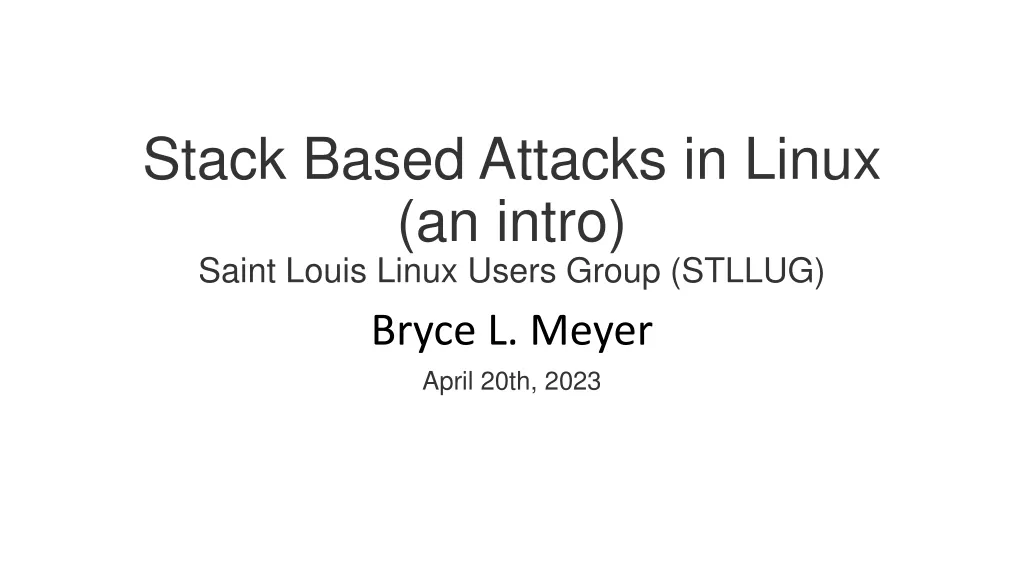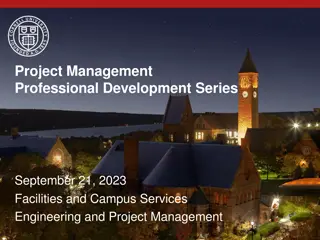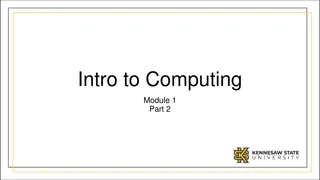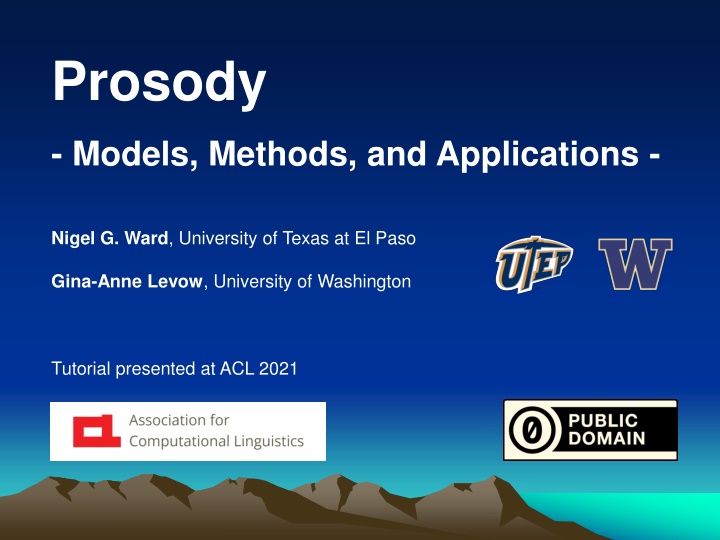
Exploring Prosody: Models, Methods, and Applications
Dive into the world of prosody with this tutorial presented at ACL 2021, covering throat-generated and musical aspects of speech, non-textual elements, classic linguistic prosody, technology applications, and more.
Download Presentation

Please find below an Image/Link to download the presentation.
The content on the website is provided AS IS for your information and personal use only. It may not be sold, licensed, or shared on other websites without obtaining consent from the author. If you encounter any issues during the download, it is possible that the publisher has removed the file from their server.
You are allowed to download the files provided on this website for personal or commercial use, subject to the condition that they are used lawfully. All files are the property of their respective owners.
The content on the website is provided AS IS for your information and personal use only. It may not be sold, licensed, or shared on other websites without obtaining consent from the author.
E N D
Presentation Transcript
Prosody - Models, Methods, and Applications - Nigel G. Ward, University of Texas at El Paso Gina-Anne Levow, University of Washington Tutorial presented at ACL 2021
Scope The throat-generated aspects of speech * The musical aspects of speech * pitch loudness duration creakiness breathiness timing tone prominence stress The non-textual aspects of speech* phrasing reduction pragmatics *and things that pattern with them
Contents Introduction Production, Perception Classic Linguistic Prosody Technology 1 Paralinguistic and Pragmatic Functions Speech Synthesis and Dialog Perspectives
Contents Introduction Production, Perception Stress and prominence Classic Linguistic Prosody Tone Contours and melodies Technology 1 Paralinguistic and Pragmatic Functions Emotion Sentiment Speech Synthesis and Dialog Social control Perspectives Politeness
Contents Introduction Production, Perception Feature computations Classic Linguistic Prosody Machine learning Technology 1 Speech recognition Paralinguistic and Pragmatic Functions Speech Synthesis and Dialog Perspectives
Contents Introduction Production, Perception Classic Linguistic Prosody Technology 1 Paralinguistic and Pragmatic Functions Speech Synthesis and Dialog Perspectives
Contents Introduction About the tutorial Production, Perception Why prosody matters Classic Linguistic Prosody Applications overview Technology 1 Paralinguistic and Pragmatic Functions Speech Synthesis and Dialog Historical perspective Teaching prosody Perspectives Prospects and Challenges
Intended Audiences Students Engineers Scientists Teachers Clinicians Anyone
Intended Audiences Students Engineers Scientists Teachers Clinicians (of computational linguistics, of phonetics, of English ) (building dialog systems, translation systems ) (linguists, psycholinguists, neuroscientists, sociolinguists ) (of English, of other languages, of communications ) (for diagnosis, design of interventions ) Anyone who s fascinated by how language works, or who wants to communicate more effectively
Your Instructors With help from Francisco Torriera, Andrew Rosenberg, Nicholas Cummins, Aviad Albert, Francesco Cangemi, and others Nigel G. Ward Gina-Anne Levow
Contents 1: Introduction 2: Why Prosody Matters 3: Applications Overview Introduction Production, Perception Classic Linguistic Prosody Technology 1 Paralinguistic and Pragmatic Functions Speech Synthesis and Dialog Perspectives
Prosody 1: Introduction 2: Why Prosody Matters 3: Applications Overview 4: Pitch Production
How do I choose or adapt a prosodic feature set? When do Machine Learning models outperform humans? What about pretrained models? What myths about prosody still impede progress? What are the open problems and technical challenges?
Why is prosody unlike everything else in language? How does prosody convey so much, using only pitch etc.? How are the latest models better? Why is prosody high-risk, but also high-reward?
Things to Look Forward To Politeness via a half-syllable pitch peak shift The prosody of sincere praise Cross-cultural prosodic misunderstandings What computers can do better than people What computers can t yet do at all How prosody is unlike everything else in language 5 century-old misconceptions, plus recent ones
What is Prosody? A Useful Definition 1. The musical aspects of speech pitch, loudness, timing, and things that pattern with them 2. Suprasegmental aspects of speech 3. Aspects of speech controlled by processes below the tongue And what it s not
Teaching Philosophy Introductory-level, yet not dumbed-down A comprehensive overview, with occasional depth Skills, not just facts for more exercises: http://nigelward.com/prosody


